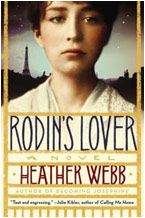 A reader or crit partner, even an agent, reads through your manuscript and says, this is too long. Cut 5k, 10k, 30k words? Your jaw drops. What the? How in holy hell am I supposed to do that? It’ll ruin my story, you cry!
A reader or crit partner, even an agent, reads through your manuscript and says, this is too long. Cut 5k, 10k, 30k words? Your jaw drops. What the? How in holy hell am I supposed to do that? It’ll ruin my story, you cry!
Chances are, there’s PLENTY to edit to make your writing tighter and your story move more swiftly. DELETE is the writer’s ultimate-super-bodacious-ultra-sonafide weapon. But there’s nothing to delete, you say? Ahh, look again, young padawan…
CHOOSE YOUR SCENES WITH CARE
This seems like a giant DUH. But it sooo isn’t, at least not at first. Sometimes we add vignettes with loving detail that really serve no purpose in terms of advancing the story or portraying a character’s traits. So how can you tell if a scene can be cut in your own work (especially when you can’t see the forest for the trees)? Look for these points in EVERY SINGLE SCENE:
- Goal— What is the protag/antag’s goal?
- Motivation—What’s propelling your character toward that goal?
- Conflict—What is the problem/issue in the scene preventing the character from achieving said goal?
- Does this scene SHED LIGHT on a character’s traits?
- Does the scene MOVE THE STORY FORWARD?
ACTIONS SPEAK LOUDER THAN WORDS
Does your protag have a duplicitous nature? Does he/she have a secret talent, a strange preference for maraschino cherries? Demonstrate this by putting your characters in the middle of a scene SHOWING us these idiosyncrasies. Do not describe them, or I should say don’t ONLY describe them. For example:
THIS: Jonny Appleseed loved to scare people. He hid in trees, behind buildings, or in dark corners and sprang upon passersby when they crossed his path. Derrick Cradlesbee was his favorite victim since he made fun of Johnny all the time.
VS.: Johnny Appleseed perched unseen on a bowed branch. A mosquito murmured in his ear and the sweet scent of rotting apples filled his nostrils. He cradled a water balloon in his hand like a baby kitten, careful not to puncture its stretched skin. And there he was—the indominable Derrick Cradlesbee with Claire Lightfoot on his arm. He would pay for making Johnny feel a fool in homeroom. Johnny leaned forward, careful not to lose his footing on the spindly branch. Just three more steps and Derrick…
You get the idea. Portraying a character within a scene is powerful and a reader is more likely to absorb the character’s traits/thoughts/feelings, etc., within an action scene demonstrating them.
TRIM ECHO WORDS, PHRASES & OTHER USELESS CRAP
Echo words or phrases reiterate an already stated thought, thus making them redundant and UNNECCESSARY. This is the part where you “murder your darlings”. Delete, prune, and leave only the meat. Here are a few questions to help guide you with your trimming. When revising, look at each word, each phrase and ask:
- Do I really need this word/line? Does it add to the story? Can I communicate the same idea with a word or two or a gesture instead?
- Is there one slam-dunk word that will nail the same string of adjectives or thoughts?
So look at your MS again. Focus on one scene at a time and comb it lovingly. I guarantee you’ll find a few lice that need to be zapped.
7 Comments
Join the conversation and post a comment.














Well put, Heather!! Snip Snip!!!!
You’re singing my song today! I LOVE editing, and this kind of editing in particular. You’re so right that cutting can and should take both forms – scenes if they’re not necessary, but even if every scene IS vital authors can still cut word count just by tightening prose.
That might not seem like much, one word at a time, but just five words per page works out to 1500 words in a 300-page manuscript. That’s a ton! It’s usually easier than scene edits, too, because you’re dealing with tightening verbiage instead of changing the story itself.
Great post!
Oh boy, oh boy! I needed to hear this today! And thanks to some amazing crit partners– I am really learning how to do this!
Oh, yes. One of my writing tics has always been to tell the reader something about the character, then follow it up with showing the same thing. It’s my lack of trust in my writing that comes across as a lack of trust in the reader.
I have a similar issue, LJ. That’s the beauty of vigilant crit group. 😉
Great points and very well put, Heather. Cutting’s scary if you’re not used to it. I paste everything I cut into another document, then it’s not lost forever if I change my mind, which I never do…
It’s funny, Jackie. I never use anything I cut either, save a line or two, but it’s still hard to let go of those lines, isn’t it? I keep a doc called “waste” as well.